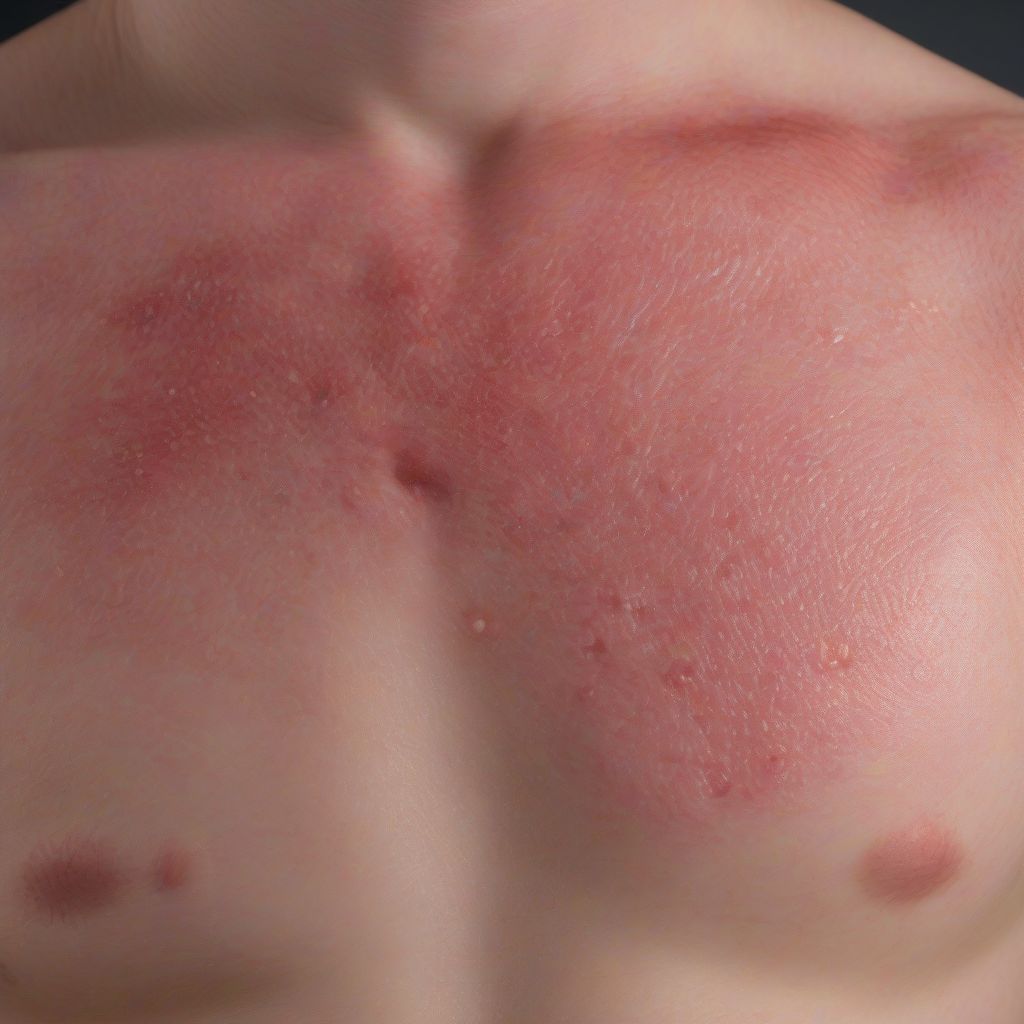
Graft vs. Host Disease (GvHD) is a serious complication that can occur after a stem cell or bone marrow transplant. While it primarily affects the skin, gastrointestinal tract, and liver, it’s the skin involvement that often serves as an early warning sign. This article aims to provide a comprehensive understanding of Graft vs. Host Disease skin manifestations, their implications, and potential management strategies.
What is Graft vs. Host Disease (GvHD) and How Does it Affect the Skin?
In a stem cell or bone marrow transplant, healthy donor cells (the graft) are introduced into the recipient’s body (the host). Ideally, these cells should rebuild the immune system. However, in GvHD, the donor’s T cells, a type of white blood cell, perceive the recipient’s tissues as foreign and attack them.
When GvHD affects the skin, it’s known as cutaneous GvHD. This condition typically manifests as a rash that can vary in severity.
What Does Graft vs. Host Disease Skin Look Like? Recognizing the Signs
Graft vs. Host Disease skin symptoms can be diverse, ranging from mild to severe. Early recognition is crucial for prompt medical attention. Here’s what to look out for:
- Redness and Itching: The initial presentation often involves itchy, red patches on the skin. These patches might resemble a sunburn or a common allergic reaction.
- Blisters and Pain: As the condition progresses, painful blisters may develop, causing discomfort and increasing the risk of infection.
- Skin Tightening and Thickening: In some cases, GvHD can lead to skin tightening, particularly on the palms of the hands or soles of the feet. This tightening, known as scleroderma, can restrict movement and cause discomfort.
- Changes in Skin Color: Affected areas might become darker (hyperpigmentation) or lighter (hypopigmentation) than the surrounding skin.
Common Questions About Graft vs. Host Disease Skin:
- Where does GvHD usually appear on the skin? GvHD can affect any part of the body. However, it commonly starts on the palms of the hands, soles of the feet, face, and upper torso.
- Is GvHD skin rash always itchy? While itching is a common symptom, not everyone experiences it. Some individuals might only have redness and pain.
- Can GvHD skin involvement happen years after a transplant? Yes, while it typically occurs within the first 100 days (acute GvHD), it can manifest months or even years later (chronic GvHD).
 racinghd.net/graft-vs-host-disease-skin/">Graft Vs Host Disease Skin Rash" width="1024" height="1024">Graft vs Host Disease Skin Rash
racinghd.net/graft-vs-host-disease-skin/">Graft Vs Host Disease Skin Rash" width="1024" height="1024">Graft vs Host Disease Skin Rash
Managing Graft vs. Host Disease Skin: Treatment and Care Tips
The treatment for GvHD skin involvement depends on its severity and how it’s impacting the individual’s quality of life. Here are some common approaches:
- Topical Corticosteroids: These are often the first line of treatment. Applied directly to the affected skin, they help reduce inflammation and itching.
- Systemic Medications: For more severe cases, oral or intravenous corticosteroids might be necessary to suppress the immune response.
- Phototherapy: Exposure to ultraviolet (UV) light can slow down skin cell growth and alleviate symptoms.
- Supportive Care: Keeping the skin moisturized, avoiding harsh soaps, and wearing loose-fitting clothing can help manage discomfort.
Living with Graft vs. Host Disease Skin Involvement
Coping with GvHD skin involvement can be challenging, both physically and emotionally. Here are some tips to help navigate the journey:
- Open Communication: Maintain open and honest communication with your healthcare team. Share any concerns or changes in your symptoms promptly.
- Support System: Connect with support groups or online communities to share experiences and learn coping strategies from others facing similar challenges.
- Skin Care Routine: Develop a gentle skincare routine that focuses on hydration and protection. Avoid harsh products that could further irritate the skin.
While GvHD skin involvement can significantly impact an individual’s life, understanding the condition, seeking timely medical attention, and adopting appropriate management strategies can greatly improve outcomes and enhance the quality of life.
Remember: This information is for general knowledge and should not be considered medical advice. Always consult with your healthcare provider for any health concerns or before making any decisions related to your health or treatment.
